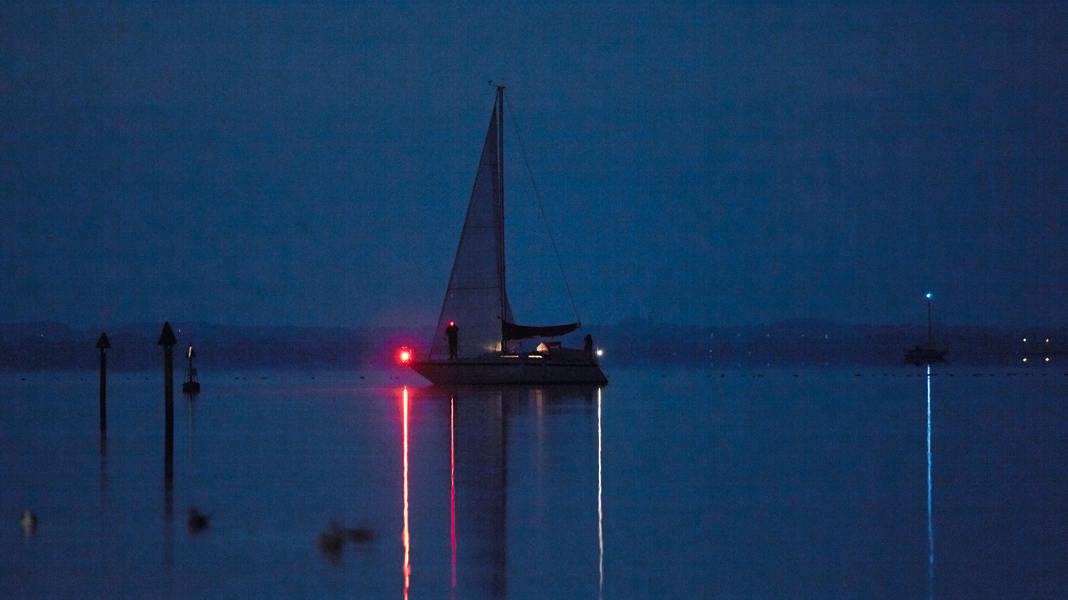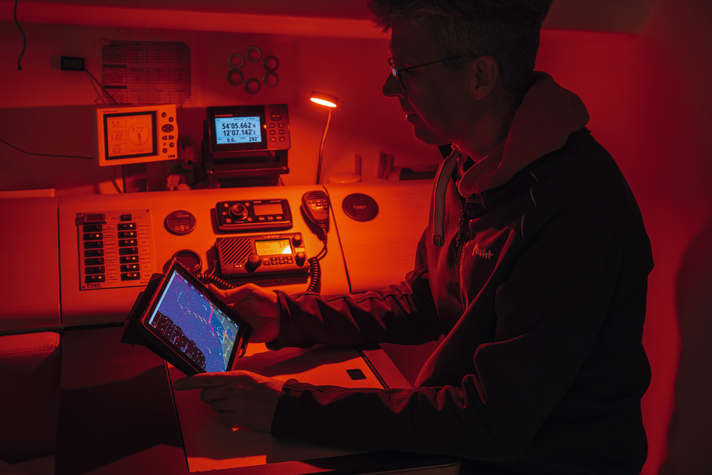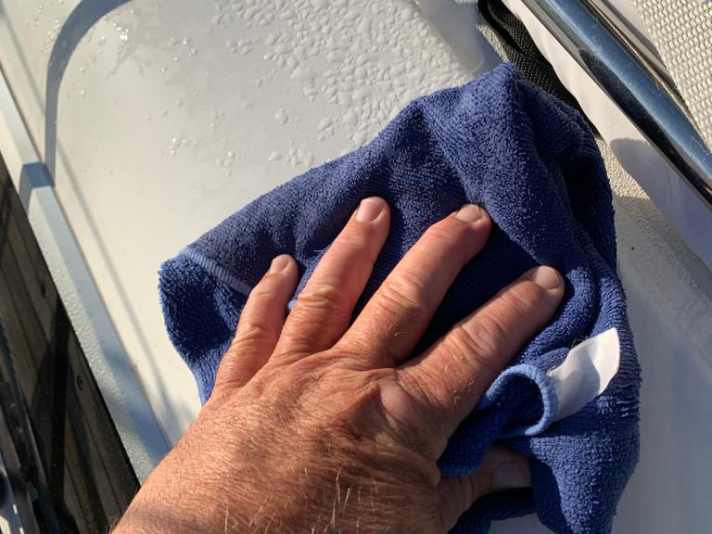
Check posis
It gets light later and dark faster, so if you want to make miles, there's no getting round sailing in the dark. So switch on the position lights and anchor light before setting sail. That way you won't be surprised by a broken bulb or loose mast plug in the twilight.
Glare-free card table lighting

Red light is particularly suitable for keeping a clear view in the dark below deck. It does not dazzle and therefore does not obscure visibility in the dark when it shines up the companionway, for example. Many reading lamps at the chart table have a red light function. If not, it can be retrofitted with a special light source or simply made quickly yourself. Coloured films for stage spotlights are available for little money. The red film is cut to size and attached to the lamp with a ribbon or tape. The red light is ready.
Personal equipment
Life jackets are recommended in rough conditions. Also safety lines. These can provide additional safety, especially in the dark. Check torches and head torches and charge them if in doubt. And then put them in your oilskin jacket before setting off. Then the anchor manoeuvre in the twilight will also work. There are also a lot of midges around in the evening, so have sprays and nets ready for the companionway and hatches.
Know your instruments
How do I switch my plotter and my other displays to night mode? This menu item is often not immediately intuitive to find. However, the displays are extremely dazzling at high brightness. So look for the instructions beforehand and familiarise yourself with the settings. If you are moored in the dark, don't forget to switch the displays back to day mode. Otherwise you won't be able to recognise anything on the dark display the next day when the sun is shining, and switching is very tedious.
Sound signals
Fog can restrict visibility, especially in the morning. The foghorn should therefore be retrieved from the depths of the back box and kept ready.
Keeping an overview
If you have a radar system on board, it may be useful to familiarise yourself with how it works on a trial basis. You may also want to have the operating instructions to hand. If the technology has not been used before, you may not be as familiar with its operation as you were last autumn.
Against the cold
It is now very chilly, especially in the morning, even if the temperatures return to summery levels during the day. So pack warm clothes on board. Don't forget your hat and gloves.
Simple deck wash

Morning dew causes wetness on deck, which usually leaves unsightly footprints after going ashore. However, a microfibre cloth wiped once through the cockpit and over the running deck can be used to ensure shine and cleanliness without the need for a water hose. The structure of the microfibre cloth has a cleaning effect even without additional cleaning agents.
Trip planning
Fog or strong winds occur more frequently in autumn and, in the worst case, can force sailors to spend a day in port. For this reason, the sailing plan should also be adapted to the weather conditions at this time of year. Allow more time and do not sail into fog or storms because of time pressure.
Enjoy the last days of sailing
Even when the weather turns autumnal, there are often still very beautiful days on the water. And the Baltic Sea is still warm. So anchor, go for a swim and make wonderful memories on board. Winter will come soon enough.
